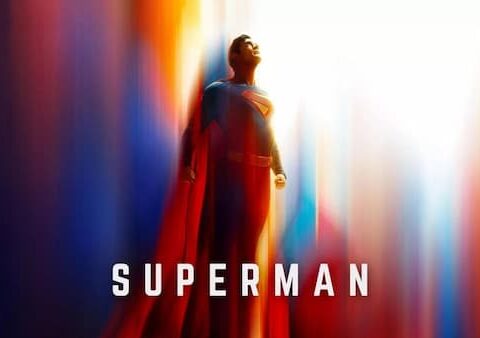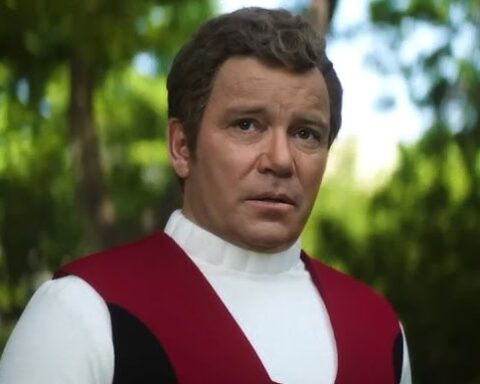It’s taken me forever; but here, finally, is the bumper review of Marvel’s epic Secret Wars event. I am late with this, but I needed to find the time to re-read the entire story.
Secret Wars came packaged as a paradigm-shifting, universe shattering mega event like no other before it.
Personally, when I first started hearing about it months in advance, I was sceptical. ‘Great, another big Marvel event’ I thought to myself, still trying to process how bad the previous year’s big event – Avengers/X-Men: Axis was.
Worse, this was to be such a big event it would eliminate the Marvel Universe as we know it and then reboot everything.
As a reader, there’s little worse than being told that titles you’re really enjoying and loyally reading are about to be scrapped and later rebooted again (especially as we’d already done this in 2014). Uncanny Avengers was a perfect example of a title I was really enjoying, but which was now going to be halted before it had even really got going – and then rebooted with a different team and story.
On the other hand, Marvel had been building to this event for a very, very long time; and Johnathan Hickman’s build-up run in the pages of Avengers and New Avengers had been utterly superb and probably up there with the very best material I’ve ever read.
So I couldn’t be entirely resistant to this. And anything centered on Doctor Doom is always going to be interesting.
But big events so often go so wrong and fail to justify themselves. Was that going to happen with this?
So below, first, are my review notes for each Secret Wars installment; followed by an overall review.
Secret Wars #1 was a thing of brilliance. The cover by Alex Ross, with all the heroes/characters falling away from Doom’s image, is utterly brilliant.
The page 11 visual of various heroes surging up the skyline in unison to attack the enemy is epic; beautiful rendering of colour and tone too, like a sunset-hue against which this earth-ending, climatic event is transpiring. The ‘final incursion’, the two earth’s colliding and confronting each other, is also just a great, evocative idea at its core; but is also beautifully, engagingly presented and rendered.

What’s genuinely great about Secret Wars #1 is the real palpable sense of this desperate final struggle, and the real sense of the end of the world that permeates every image, every panel, every bit of dialogue. It’s there in the characters’ actions, it’s there in the faces, it’s even there in the use of colour.
This really is a superb, superb comic. Having read any number of big Marvel ‘event’ stories over a number of years, this is right up there with the very best.
Here is a roll-call of the most iconic faces of the MU coming together for one last, desperate act of collective heroism; the X-Men, Avengers, Guardians of the Galaxy, and every solo hero you could think of.
Inevitably that means a number of characters some of us would like to see more featured in this kind of mass crossover scenario don’t get as much page-time as we would hope; but that is invariably the case in events like this. It’s great that Jessica Drew and Nightcrawler get a moment here, being two of my favorite characters, and the Cyclops/Phoenix dynamic is also cleverly and effectively utilised.
Steve Rogers’ ongoing assertions that Reed and the other Illuminati members are essentially elitists playing god is demonstrated most here in Secert Wars #1 with Reed essentially deciding who gets to survive this incursion and who doesn’t, who lives and who dies. This central fact of the storytelling works best in concert with some of Johnathan Hickman’s vast lead-in material that has been populating Avengers books for some time now (and which I can’t praise highly enough – there aren’t enough superlatives in the dictionary).
The ship or ‘raft’ being torn apart and Reed having to watch Susan and the children be lost is a powerful moment; but really, the whole comic book is one powerful moment.
The poetic flourish to all of this is also a key ingredient, becoming not pretentious or overly contrived but genuinely fitting for the story.
Victor’s line “I, Doom”, should’ve been the title of the book, as it encapsulates everything perfectly. It should also be the title of Doom’s autobiography (with a foreword from Valeria Richards). Also, I would totally buy and read that autobiography.
‘I dress the lie up in a little story of hope, because if they have that, they’ll believe they have a chance…’ is the kind of engaging, evocative dialogue and theme that I look for and want in epic storytelling of this kind; it is also reminiscent of Doom’s ‘story’ narrative to Loki during the Axis storyline and is very in-keeping with what we expect from Victor.
It is no exaggeration when I say Secret Wars #1 is genuinely one of the best single comic books I’ve ever read.
Of course, it can’t be perceived in a vacuum; and so much of what’s so great in this book is the product of years of planning and prologue in the pages of multiple comics, amounting to quite possibly the biggest – and quite conceivably the very best – long-form storytelling in comic-book history.
But even so, Secret Wars #1 does – on its own merit – hit the right mark, set the right tone, on so many levels that it fully deserves great praise on its own.
As the start to a massive comic-book event, it does its job spectacularly well; but moreover as the concluding piece to a vast amount of preceding storytelling, it does it’s job even better, coming close to pretty much perfection.
‘The Marvel Universe, 1961 – 2015’ the plaintive text reads at the end. As much as one might on some level be resisting the hype over so big an ‘event’, this is done so effectively in both character and storytelling terms that by the time you’re reading those words you really are deeply compelled and fully on-board.
We push on then to Secret Wars #2.
So here we get into what is essentially the beginning of our exploration of our new reality; and SW #2 does a great job establishing scenarios and dynamics, setting tone and themes.

The opening scene with the Thors serves its purpose in effectively establishing that Doom is God, the ‘All-Father’, and that the world we are now seeing is a world made (or remade) in his image. The image on page 5 of the Thors kneeling before the giant likeness of Doom’s mask establishes this evocatively in purely visual terms.
The Thors recounting the mythology of how ‘God Doom’ made the world is wonderfully Biblical. As a Doom fan, I was always going to love the idea of Doom being centre-stage, being the maker and ruler of existence.
Affording Sinister a prominent role in the story is also a great surprise and genuinely unexpected – I’ve loved Sinister since I was a teenager reading X-Men books in the early nineties, and I’ve always felt Sinister was under-used and sidelined in too many stories (and particularly under-utilised outside of the X-Men books).
Castle Doom is a stunning setting, both conceptually and visually; and the sight of a dormant Galactus stood there as a silent, towering sentinel with peperatual flame and smoke billowing out of him is a fabulous, evocative touch. The mightly cosmic World-Eater, otherwise feared as the great destroying power of the cosmos, is now just a trophy or ornament for Doom, which is immediately fascinating and unsettling in equal measure.
It effectively illustrates just how all-powerful Doom really is in this new reality.

The architecture and feel of Castle Doom is nicely established throughout this comic. It is beautifully conceived and really artfully conveyed; for example, in the sequence on page 31 where Doctor Strange and Valeria Richards are walking down the marble steps, through archways and passed statues.
The details in scenes like this really approach cinematic quality, and there’s a real, palpable sense of this being a real place, albeit an otherwordly one.
The genius touch is when we see just part of the giant Galactus outside as Valeria and Stephen are approaching an archway, but not the full reveal. Then they’re out on a stone balcony and we still don’t see the full scale of Galactus, still just part of him. It is a brilliant and subtle use of perspective, detail and refrain that really gives you a three-dimensional sense of the location and architecture.
Stephen and Valeria’s conversation is interesting too, establishing the idea of a kind of religious orthodoxy that exists in this world where it is taboo to question the nature or age of the world, even though there are little niggling hints or clues that there is something not right with the prevailing orthodoxy or belief system.
This is genuinely interesting writing, exploring somewhat the theme of religion and dogma in a society where there are many who also doubt.
This, later in the series, also becomes a story about how one maintains a failing dogma in an increasingly questioning population; but for now, in Secret Wars #2, that theme is set up effectively and is one of the several areas in which this Secret Wars saga can be seen as a genuinely adult arena and not mere superhero/supervillain silliness.
What Secret Wars #2 does so effectively is precisely what it needs to: it presents this new reality to us in an engaging manner and it introduces us to what a reality created and centered around Doctor Doom looks and feels like.
Again, as a massive Victor Von Doom fan, this was a great joy to me personally. This all really feels like the ultimate manifestation of Doom’s personality and self-image into reality itself. Everything that Doom is – how he sees himself and how he sees the world – provides both the heart and the framework for this new reality; he is the Sun around which everything and everyone revolves.
And this is in essence the role Doom was born to play. It’s as if all of his character and psychology for decades has been leading to this moment.
A grim looking Doom sitting on his throne and passing judgements is fitting, and our first sight of Susan and Valeria beside him is enticing, drawing us even further into the scenario one panel at a time.
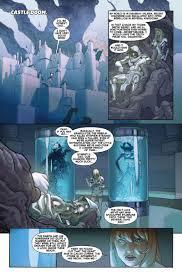
It’s hard not to love that all these powerful villains and famous characters, even if they squabble among themselves, are essentially vying for crumbs from Doom’s table; they are all utterly subservient to Doom – Sinister, even Apocalypse, the lot of them. We are reminded naturally of countless real-world dictatorships where the dictator is god and all these secondary power struggles and ego-clashes go on all around him, which he is barely interested in but has the final say on.
The pacifying influence of Susan in her relationship with Victor is evident right away – subtly demonstrated by a simple lean forward to his ear and whispering “Victor – mercy”, when he is about to condemn the House of Braddock to punishment. Doom simply acquiesces with a quiet, “yes, Susan, of course.” This scene establishes quickly that Doom has genuine softness and affection for Susan and isn’t simply a hard-hearted, iron-fisted dictator. It establishes the hint that she is his conscience, his soft side.
The Doom/Sue dynamic established here is fascinating; and indeed becomes even more textured and fascinating as the series goes on.
The highlight of Secret Wars #3 is the Doom/Susan conversation on the balcony, which is absolutely stunning; it is visually absorbing too, but most of all it is fascinating for other reasons.
The tenderness and respect between Doom and Susie is wonderful, clearly running deep. The fascination and potential we saw with Susan and Doom in Secret Wars #2 starts to find fuller expression here, and I really could read a whole bunch of comics just focused on these two and their relationship – hell, I’ll happily take a novel.
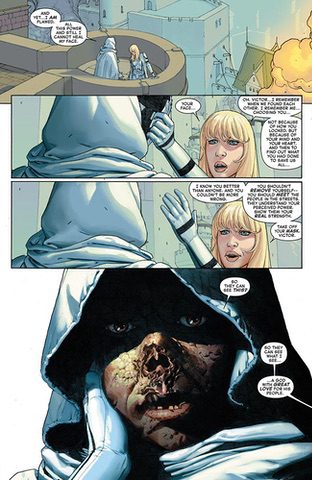
The story of the ‘Man in the Sun’ – who we learn is Johnny Storm, who was literally ‘made into the sun’ to bring to light to the world, is yet another utterly spellbinding layer of mythology to this world; and touches like these really do so much to establish the reality and highly mythological society of this world.
Victor’s introspection – “I am a poor God” – is of course endlessly fascinating too. Whether I am alone in this opinion or not, it is curious to note that this Susie/Doom moment is more interesting and touching than any Susie/Reed moment I can receall ever reading.
The other big moment here is Stephen finding Reed’s ‘raft’ and encountering the survivors from the former world; Reed, Carol Danvers, T’Challa, Peter Quill, Cyclops (Phoenix), Spiderman and Thor. He informs them plainly that Doom is God and ruler of this new world; and what’s interesting is how Stephen casually justifies it; “He is very good at playing god,” he tells his former friends simply.

There is a palpable tension beginning to build in SW #3 that will characterise the remainder of the series. But it’s still all wholly compelling, absorbing, superb stuff.
Secret Wars #4 centers on one major plot point, this being Doom heading off to confront Richards and the old-world survivors, along with Thanos and the Cabal.
This vital moment in the saga is epic. Cyclops, in his spiralling egotism, attacks Doom with the Phoenix and insists this world should be *his*. That moment felt a little jarring. We know Scott Summers is a very different person these days to what we used to know, and yes he has a major ego on him – but even allowing for the fact that it was the Phoenix more than Summers who was challenging Doom here, it feels a little hard to swallow and seems more like something Magneto would do than Scott.
What’s terrific here though is Doom, who seems at first overpowered by his assailant, virtually melting before our eyes; but then he suddenly just grabs Scott by the throat and ends it.
What this all builds to is a key decision from Strange.
Stephen sends the old-world heroes away for their safety, in order to stop Doom destroying them. He refuses is to bring them back when Victor demands it – Doom then kills him. It is a fascinating moment: and we can tell perhaps that Stephen knew it would come as soon as he decided to take the action he did. And perhaps moreover that Victor both regretted having to do it and had no doubt at the same time that it was what he, God Doom, had to do.
Secret Wars #5 is, bizarrely, not very interesting.
In fact, so little seems to happen here that I can barely find anything to remark on.

Quite how the creative ball was suddenly dropped in this middle issue is a mystery. Though conspiracy theorists might note that Doctor Strange’s pyramid tomb has an eye on it (Agomotto, I guess), resembling the alleged ‘Illuminati’ symbol of the occult pyramid and all-seeing-eye on the real-world dollar bill.
That’s the only observation I have for SW #5 – which demonstrates how lacking this chapter is. Baffling.
Inheriting some of the lack of bite to SW #5, Secret Wars #6 suffers from some inconsistencies in quality compared to the first few issues. But this time there is enough of genuine interest to keep us engaged.
It’s in this issue that we really start to see a rebellion starting up against Doom’s rule. This is the beginning of the end for Doom’s world.
I don’t know if it makes me a bad person, but by this point in the story – we know, inevitably, that Doom’s kingdom is going to be overthrown – I was genuinely resisting Doom’s downfall and wanting his rule to continue for longer. This is partly because I’m such a Doom fan, but moreover it is because I have been genuinely drawn into this world that has been made in Doom’s image and want to explore more of it, along with more of Doom’s psychology.
Even six issues in by now, I still didn’t feel like we’d gotten enough.
Thanos revealing the truth to the Thing – that this world isn’t real and this isn’t reality as it should be – is one of those plot-points that feels less like an organic development and more like a storytelling chess-piece being moved into place.
On the other hand, Valeria doubting the prevailing orthodoxy of this world and investigating for herself works as a logical, organic story development, given what we know of her personality and intellect.
I’ve liked Valeria as a character for a long time, particularly her relationship with Victor, and I like how she’s written here and how important she is to the story. In this instance, the mysterious death of Stephen Strange has triggered a serious crisis of faith in her, with her now doubting every prevailing dogma about the reality she inhabits.
But you sense that Valeria’s intellect is such that she would’ve ended up being plagued by doubt at some point anyway; and that Stephen’s death is merely the trigger for something that was already there.
The scene with the Molecule Man is interesting and suitably esoteric, while Namor and T’Challa getting back together to visit Isle of Agomotto ups the intrigue suitably. I don’t think I could ever get bored of seeing these two together, with all their history and respective stature. T’Challa donning the Infinity Gauntlet makes for a big moment.
Although the quality by this point isn’t as consistently high as it was in the first few issues, there are still some really nice touches and moments.
Sue telling Franklin the bedtime story of the Fantastic Four from the old world is one of them. It operates on several levels here; first, it indicates that Sue – as much as she loves Victor – knows on some level that this world isn’t right and that the old world is where she belongs. But also it acts as a reminder to us as readers of this former world that we – like Susan – knew so well; and that, as compelled as we may be by this present reality, there is this former world that we also loved and may inevitably need to return to.
The cover to Secret Wars #7 is truly epic; depicting God Doom being overwhelmed by a collective attack from half the Marvel Universe.
Again, I’ve touched upon this before and I know I’m probably alone in this perception, but I can’t help but see echoes of Libya’s Muammar Gaddafi with Victor. The last time I made that observation was in relation to Axis, Latveria and Doom’s rule there; in this instance, this story of a collapsing kingdom and its overwhelmed ruler, brings those analogies back home again, particularly illustrated by that cover image of Doom being overwhelmed by all this rebellion – which, rather disturbingly, evokes the tragic Gaddafi being surrounded by armed rebels in Sirte in 2011.
Doom’s kingdom is crumbling, under attack from all sides. His rule is inevitably going to collapse; but Doom continues to be the most psychologically fascinating character around, as we watch him struggling and maneuvering to hold off the inevitable.
Aside from Victor, some of the rest of this issue doesn’t really match that level of interest; however, we do still get more T’Challa/Namor interplay and T’Challa refering to himself as ‘King of the Dead’, with an image of him looking out across a spectral army of dead Wakandan warriors, is both visually and conceptually awesome.
Secret Wars #8 then: and The Thing being taken out by Franklin, literally punched into pieces, is a pretty shocking moment.
In general, Grimm’s role in this story has been pretty limited (but not as limited as Johnny’s); though at least this clash gives him a memorable moment.
Starlord releasing Groot in Doom’s castle and Groot destroying half the complex is both kind of cool but also bittersweet – as I really love Castle Doom, and this literal destruction is also a symbolic destruction of what Doom represents and what he has built.
The brief showdown between Doom and Thanos is suitably intense; it also demonstrates that Doom really is a much more layered villain than Thanos will ever be, and more merciful and compassionate (at least to the point that his logic permits compassion). In truth, Doom is probably a more layered, engaging villain than *anyone* else.

I’ve never particularly liked Thanos and I’ve always loved Doom – so it’s a pretty satisfying fan-boy moment when Doom eliminates the Titan effortlessly, with one move reducing Thanos to pathetic skeleton. Brilliant.
Unfortunately, T’Challa and the ‘army of the dead’ arrive just then to take down Doom. This kind of moment tends to have me conflicted; I actually love T’Challa, the Panther being one of my favorite characters. And ultimately I guess I want the Good Guys to win.
But I think I love Victor more. And again, a part of me doesn’t want him to lose, doesn’t want him to see everything he’s built crumble.
Does that make me a bad person? Probably.
And so we come at last to the end game; the final piece of a vast mosaic that has been years in the making.
Does Secret Wars #9 rise to the occasion?
Does it do justice, not just to the several months of MU-reorganising comics we’ve had this year, but to the years of storytelling build-up that brought us here?

The answer, as we might expect, is both yes and no. Final chapters to big comic-book events had hardly *ever* very satisfying. The best, most interesting parts are almost always NOT the end pieces.
Secret Wars is no exception. Without doubt, the best parts of Secret Wars were in the earliest chapters; while in truth the best parts of the overall canon of material are in the pages of Hickman’s Avengers and New Avengers groundwork.
There probably isn’t an entirely satisfying way to conclude a story arc as vast and long-form as this has been. The best that can be done is to wrap it up in as artistic and thematically appropriate a manner as possible.
On that criteria, Secret Wars #9 doesn’t do a bad job.
The cover is suitably epic and compelling, with its patchwork of scenes surrounding the central image of Victor and Reed locked in their struggle.
I love that, with all the players involved in this storyline, what we get is a showdown with Doom, T’Challa and Namor – three of Marvel’s most enduring and interesting characters, yet not always three of the most prominent in big moments. Hickman has done such service to Namor and T’Challa over the last few years in the Avengers titles leading to Secret Wars, for which I have been particularly grateful; and it is very fitting and pleasing to have them as the two characters here confronting Victor.
It’s also curious to note that these are the three most prominent ‘international’ characters in the standard Marvel Universe (leaders of Wakanda, Atlantis and Latveria, respectively), and so what we kind of get here is a distinctly international/world feel to this confrontation, as opposed to an American one.
Ultimately the Panther’s confrontation with Victor is simply a delaying tactic and Doom’s real contest lies, fittingly enough, with Reed Richards elsewhere.
The end clash between Reed and Victor can be seen as somewhat anti-climactic; but it is nevertheless appropriate and probably the only thematically suitable place we could end up. Reed and Victor are the archetypal nemesis dynamic; two figures you can imagine locked in a perpetual struggle for all eternity.
As far as how this whole saga is ultimately resolved – yes, it does pretty much feel like bullet-point plot-devices being mechanically moved about in order to close up the story.
Again, I wasn’t realistically expecting much better, as finales in general have a bad track record – especially a finale to something as vast and complex as this entire story has been. It’s not so satisfying and it doesn’t really do justice to the best of what has preceded it; but as powerpoint-style endings go, it isn’t too bad.
It works thematically and certainly has a poetry to it.
While the sight of Reed and the children literally tossing universes into existence like a game of frisbee is actually a little annoying, it is at least off-set by some nice characterization of the Molecule Man, a rather poignant reset of T’Challa back on Wakanda (right back where this whole epic saga began, seemingly a lifetime ago), and a vaguely poignant end-page of Victor back in Latveria.
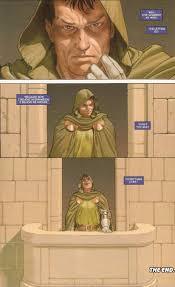
What are we to make of Victor in this ending? He smiles and laughs when he finds himself back in his old world.
What does it signify? Is it relief that his vast burden as god, ruler and reality-maker is over? Is it acknowledgement that his world was a failure and Reed will do a better job? Perhaps it is intended to be vague and open to interpretation – which is fine. Either way, it’s a fittingly poignant note to end on, even in a series finale that is otherwise unsatisfying in other areas.
I confess to not having much enthusiasm for all the Marvel rebooting that occurs after this – some of which is shown right here in the final pages; but on the whole, there is something, in the end, that does seem to work with how Secret Wars #9 is presented; it does seem to fit thematically and poetically in unison with everything that has preceded it.
In terms of ‘doing justice’ to all the storytelling that preceded it, it was never going to be able to do that – what Hickman and co did with this epic saga was so big, so complex, that we were never going to be able to do justice to it in this one last comic book.
But that it is a different thing to asking whether this ending ‘justifies’ all the hype and enormous lead-in material.
My answer to that is that it doesn’t NEED to ‘justify’ it – the quality of all of that lead-in material is its own justification. Hickman’s run with Avengers and New Avengers over several years, and then with most of this central Secret Wars title, has been utterly superb, utterly gripping.
It has featured some stellar storytelling of the best possible kind, some truly special characterisation and interplay, some fascinating ideas and concepts, and it has, in general, been a magnus opus of almost unparalleled quality (as far as Marvel ‘events’ go), managing to sustain its quality level over a very long length of time.

And Secret Wars #1 was one of the best comic books I’ve read. And the first four issues in the main series scaled great heights and sustained a remarkable level of quality. The main series began to wobble in terms of quality by about halfway through – and it probably waned in the last couple of issues. But the finale managed to restore some of the quality-level – and provided a suitable end-point, doing so with a great poetic flourish.
For sheer ambition and scope alone, Hickman should be celebrated; but more than that, the vast body of work speaks for itself.
And it didn’t really need Secret Wars #9 to be perfect to prove that fact. The fact that SW #9 is as fitting as it is is almost surprising enough.
In the broader strokes, I have enjoyed Secret Wars immensely.
When I say ‘Secret Wars’, I refer only to the main 9-issue event I’ve talked about here (and all of the Hickman material on the Avengers’ books).
I had decided early that I wasn’t going to read every single Secret Wars tie-in series, but just focus on the main series. Some of them sounded very silly anyway; so I didn’t touch Battleworld (I did, however, end up doing Age of Apocalypse, Spider Island, and a couple of others; and nothing I read of the tie-ins was really worth it). I did, however, enjoy some of the ‘Last Days of’ lead-ins. It all ultimately helped enhance the apetite for the big event and make it clear to everyone that something truly significant was imminent.
But as far as the main, central event is concerned, I consider it – overall – a triumph. Given that I was originally sceptical about the whole event, it exceeded my expectations.
As big comic-book events – and their endings – go, it’s certainly one of the very best. And all of the lead-in material, as well as most of the Secret Wars series itself, amplified and resonated with my life-long love for the Marvel Universe – and its vast tapestry of characters and mythologies – in a way that hasn’t happened this strongly for a long time.
I enjoyed Secret Wars a great deal when I was reading it the first time; over a year later, putting the finishing touches to this review, I appreciate it even more now than I did then. It is ageing beautifully – which is arguably a sign of a story with a lot of longevity in it.


